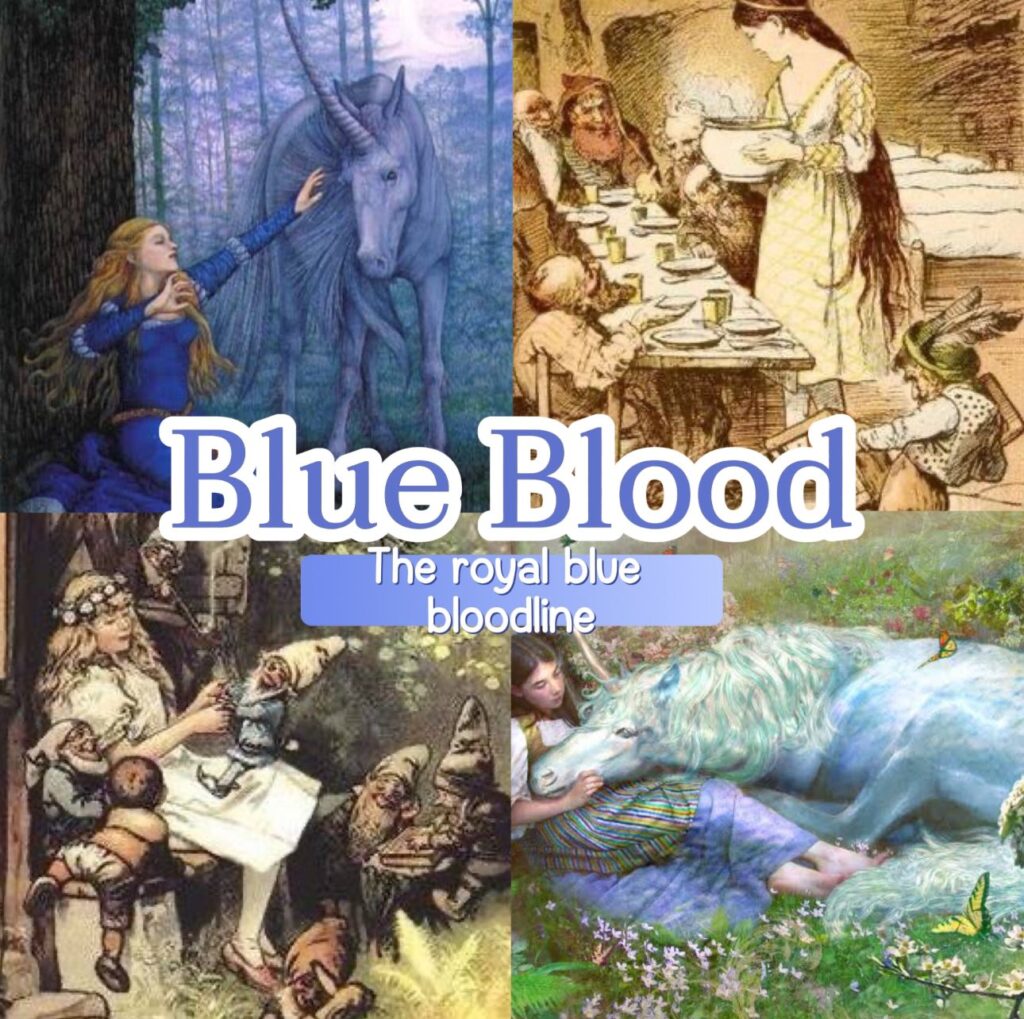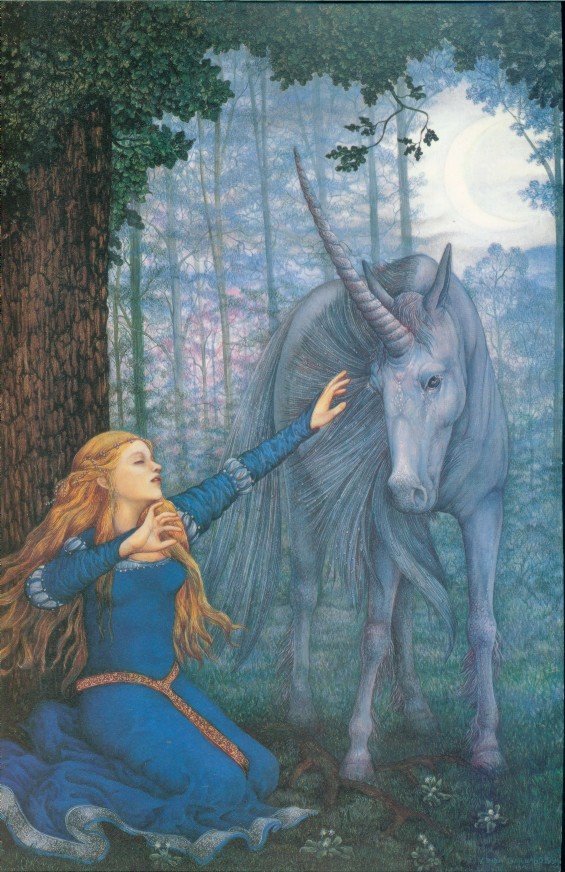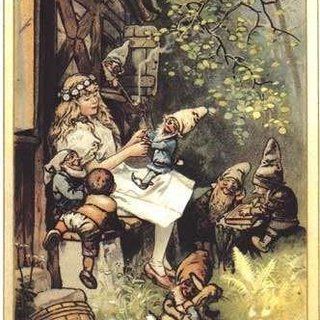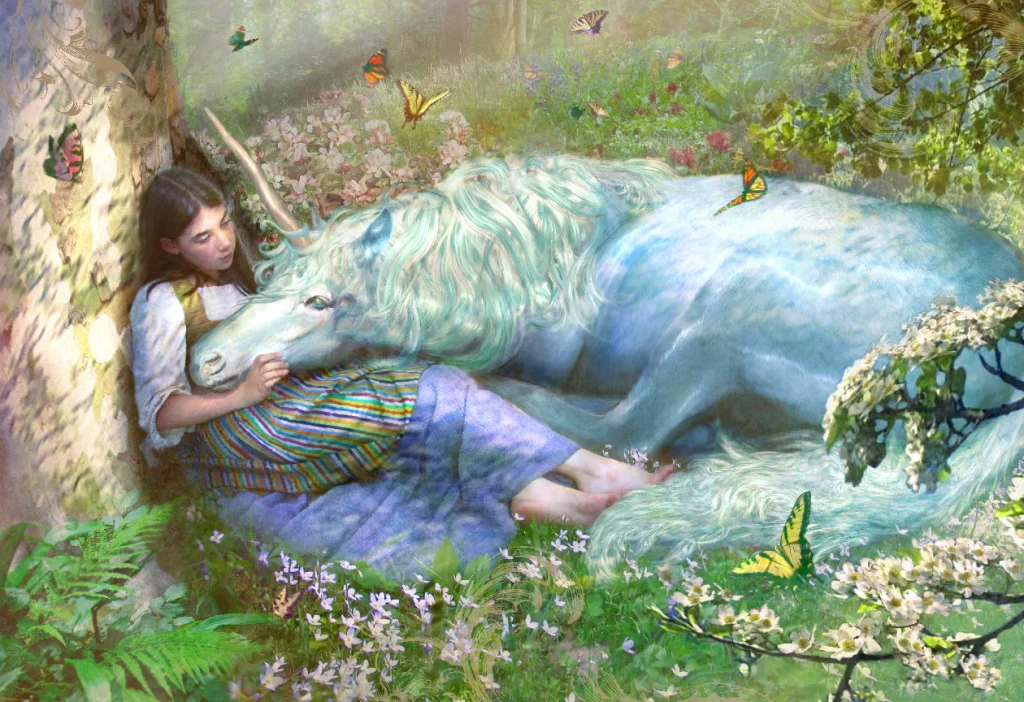Have you ever wondered why, in so many fairy tales, magical creatures and special beings are always so quick to help princes and princesses? Why did the Seven Dwarfs let Snow White stay in their cottage without a second thought? Why do little birds and forest animals eagerly assist princesses whenever they’re in trouble? Why do unicorns allow only royal figures to approach them?
The answer lies in an ancient belief — the idea of “blue blood,” a symbol of royal lineage believed to carry not just noble status, but a kind of innate purity, grace, and destiny that even nature itself recognizes.

What is Blue Blood ?
The origin of the term “blue blood” is incredibly fascinating. Dating back to the Middle Ages and continuing into the Renaissance, European nobles and royal families often had paler, whiter skin compared to the common people. This was largely because they did not have to labor under the sun, and their complexions were further enhanced by the widespread use of mercury-based cosmetics, which were popular at the time for making the skin appear even whiter. The longer they used these products, the thinner their skin became, causing the veins beneath the surface to become visibly blue or bluish under the pale skin.
In contrast, the common folk, who worked outdoors and had naturally tanned or darker skin, did not exhibit visible veins, nor could they afford such cosmetic luxuries. Over time, the stark difference between the two groups led to the association of pale, vein-revealing skin with nobility. This is how the term “blue blood” first came into use — a label to distinguish the aristocracy from the rest of society.

The book of the unicorn by Linda Garland
But this belief runs even deeper. In ancient traditions and folklore, people didn’t just think that royalty had visible blue veins — they truly believed that royal blood itself was different from ordinary blood. It was thought that monarchs held a “Divine Right” to rule, a sacred mandate from the heavens, and that their blood was infused with a divine essence that ordinary people lacked.
This belief is also why so many royal families throughout history made immense efforts to keep their bloodlines “pure,” often arranging marriages only within other royal families. They feared that marrying commoners would “dilute” their blue blood and weaken the sacred power within it. Additionally, blue and sky blue are colors traditionally associated with the heavens and the divine, reinforcing the idea that royal blood was touched by something higher.
Another widespread belief across various cultures was that a ruler with pure blue blood was directly tied to the prosperity of the land. If the monarch was good and noble, the earth would flourish: rains would fall in season, crops would grow abundantly, and the natural world would thrive. On the other hand, if the ruler was wicked, droughts, famines, and disasters would follow. Magical creatures and beings attuned to nature were believed to be able to sense the destiny-thread that ordinary people could not see — recognizing royalty not just as rulers, but as essential guardians of the world’s balance. That is why dwarfs, fairies, and animals in fairy tales instinctively choose to help princes and princesses; by aiding them, they were safeguarding a greater destiny woven into the very fabric of nature itself.
For example, in the case of the dwarfs and Snow White, it’s important to understand that in ancient folklore, dwarfs were not simply small humans with genetic differences. They were considered magical beings who lived beneath mountains, masters of mining and precious gems. It was believed that dwarfs had a special power — the ability to see the “true value” of things, whether it be gemstones or people.
So when Snow White fled and sought refuge with the dwarfs, claiming she was a princess, they didn’t merely take her word for it. Instead, they could “see” and “sense” the truth for themselves: her “blue blood” shone with a brilliance like a precious gem, a light that could not be faked or imitated. It was this undeniable aura of royalty and sacred destiny that moved the dwarfs to offer her protection, knowing they were safeguarding something — and someone — truly extraordinary.

Snow White by Arthur Rackham
Or take the legend of the unicorn and the princess. The unicorn, a creature of great strength, beauty, and mystery, was also known for its fierce and untamable nature. However, according to legend, the only ones capable of calming and approaching a unicorn were princesses with pure, virtuous hearts. It was believed that a unicorn would shed tears only for those of truly pure blood — and that these rare tears possessed miraculous healing powers capable of curing even the gravest illnesses. This belief beautifully illustrates how the purity of a princess, combined with the sacredness of royal blood, was thought to resonate with magical creatures, creating a bond that transcended the ordinary world.

The Eyes of the Unicorn Book by Holiday House
In some legends, it was even said that the blood of true kings and queens held healing powers. During the Middle Ages in Europe, there was a widespread belief that simply touching a monarch could cure certain illnesses, because of the divine force believed to reside within their blood. This idea only further deepened the respect and reverence that magical creatures in fairy tales showed toward those of true blue blood.
Thus, the aid offered to princesses and princes in these stories was never just out of pity. Rather, the magical beings and enchanted creatures instinctively “recognized” the vital role of blue blood in maintaining the balance of nature itself. They could perceive the sacred essence hidden within royal blood — something invisible to the eyes of ordinary humans.
These stories reflect an ancient worldview where royalty was seen as possessing supernatural qualities, not merely through power or wealth, but through their “blue blood,” which was thought to be intimately tied to divine forces. This belief became so deeply rooted that it evolved into a major theme across fairy tales worldwide, where magical creatures honor and assist princes and princesses as a matter of instinct, even when the royal figures themselves are unaware of their true lineage or are disguised as commoners.
- All Posts
- CONTENT - EN
- Disney Cruise Ship
- Disney Resort EN
- Back
- About Shanghai Disney Resort
- Hotels at Shanghai Disney Resort
- Back
- Tokyo Disneyland
- Tokyo DisneySea
- Disney Hotels atTokyo Disney Resort
- Restaurants at Tokyo Disneyland
- Back
- Hotel - Hong Kong Disneyland Resort
- HKDL Restaurants
- Back
- Tokyo Disney Resort
- Shanghai Disneyland
- Hong Kong Disneyland Resort
- Tokyo Disneyland
- Tokyo DisneySea
- Disney Hotels atTokyo Disney Resort
- Restaurants at Tokyo Disneyland
- About Shanghai Disney Resort
- Hotels at Shanghai Disney Resort
- Hotel - Hong Kong Disneyland Resort
- HKDL Restaurants
- Back
- Hotels at Shanghai Disney Resort
- Back
- Restaurants at Tokyo Disneyland
- Back
- โตเกียวดิสนีย์รีสอร์ท TOKYO DISNEY RESORT
- ฮ่องกงดิสนีย์แลนด์ HONG KONG DISNEYLAND
- เซียงไฮ้ดิสนีย์แลนด์ Shanghai Disneyland
- โตเกียวดิสนีย์รีสอร์ท TOKYO DISNEY RESORT
- โตเกียวดิสนีย์แลนด์ l TOKYO DISNEYLAND
- โตเกียวดิสนีย์ซี TOKYO DISNEYSEA
- RESTAURANTS ร้านอาหารในโตเกียวดิสนีย์แลนด์
- ATTRACTICNS เครื่องเล่น
- DISNEY HOTEL โรงแรมในเครือดิสนีย์
- RESTAURANT ร้านอาหาร
- ATTRACTICNS เครื่องเล่น
- ATTRACTICNS เครื่องเล่น
- RESTAURANTS ร้านอาหาร
- DISNEY HOTEL โรงแรมในเครือดิสนีย์
- ATTRACTICNS เครื่องเล่น
- RESTAURANT ร้านอาหารเซียงไฮ้ดิสนีย์แลนด์
- DISNEY HOTEL โรงแรมในเครือดิสนีย์
- Back
- アトラクション
- 東京ディズニーランドのレストラン
- 東京ディズニーランドのレストラン











